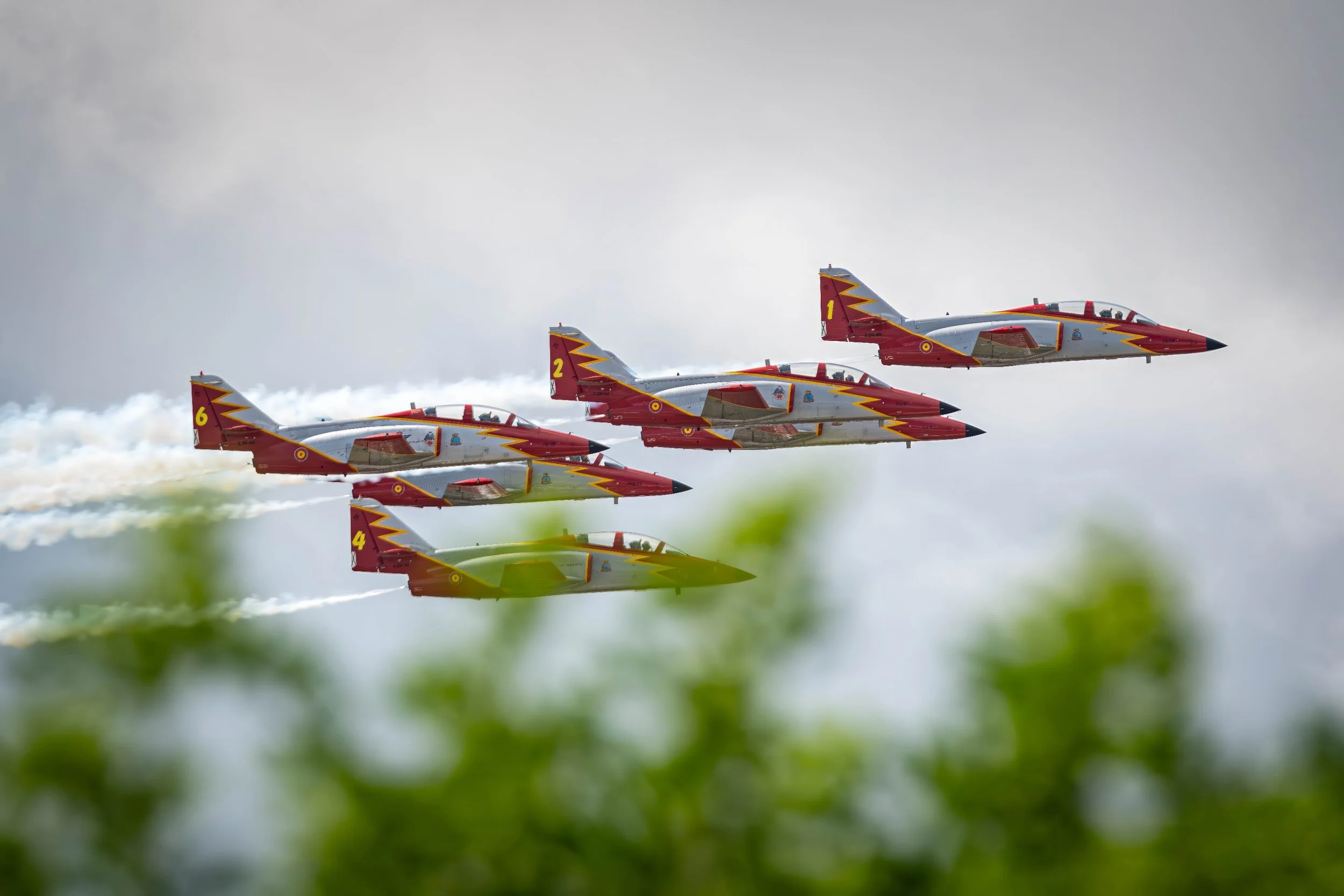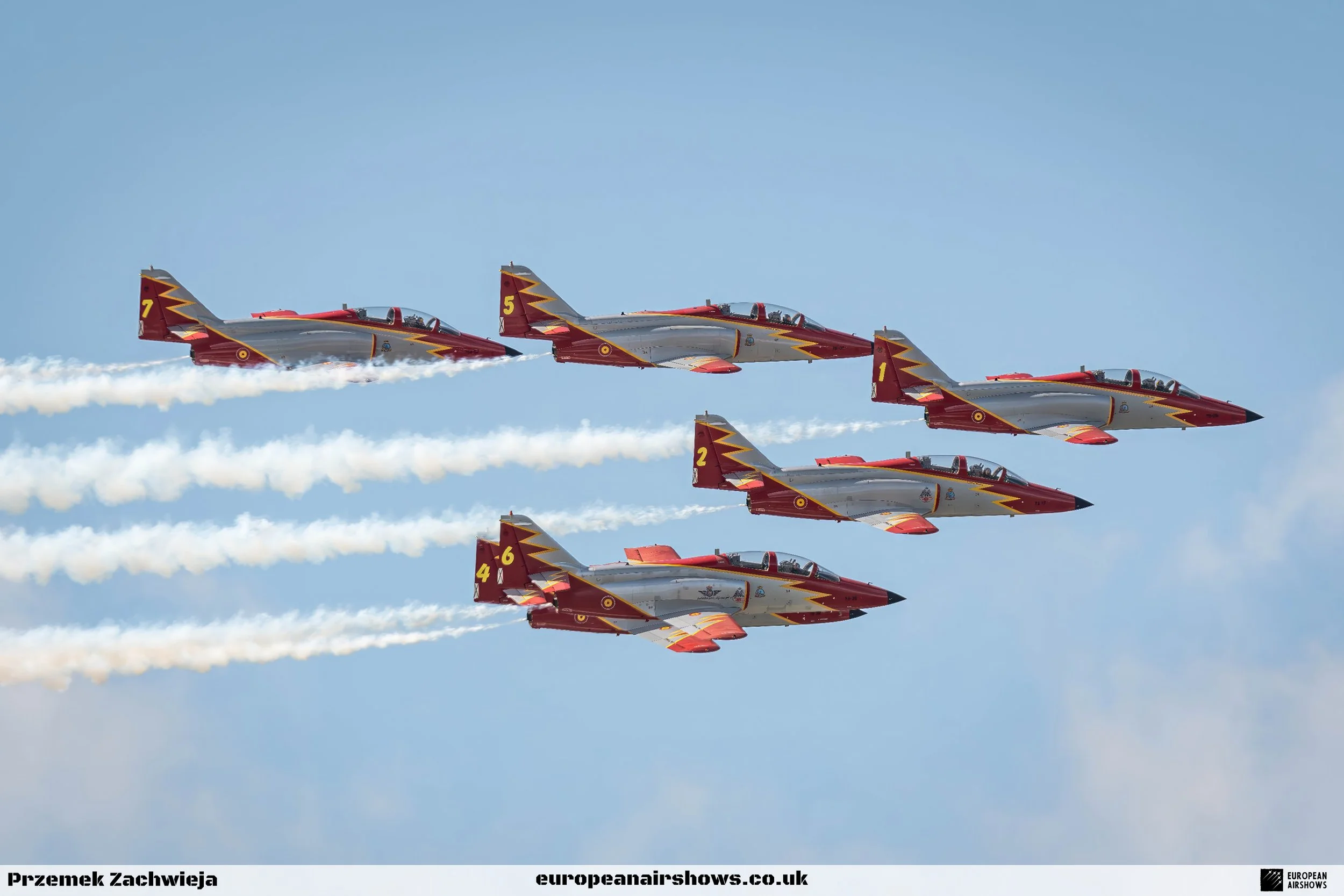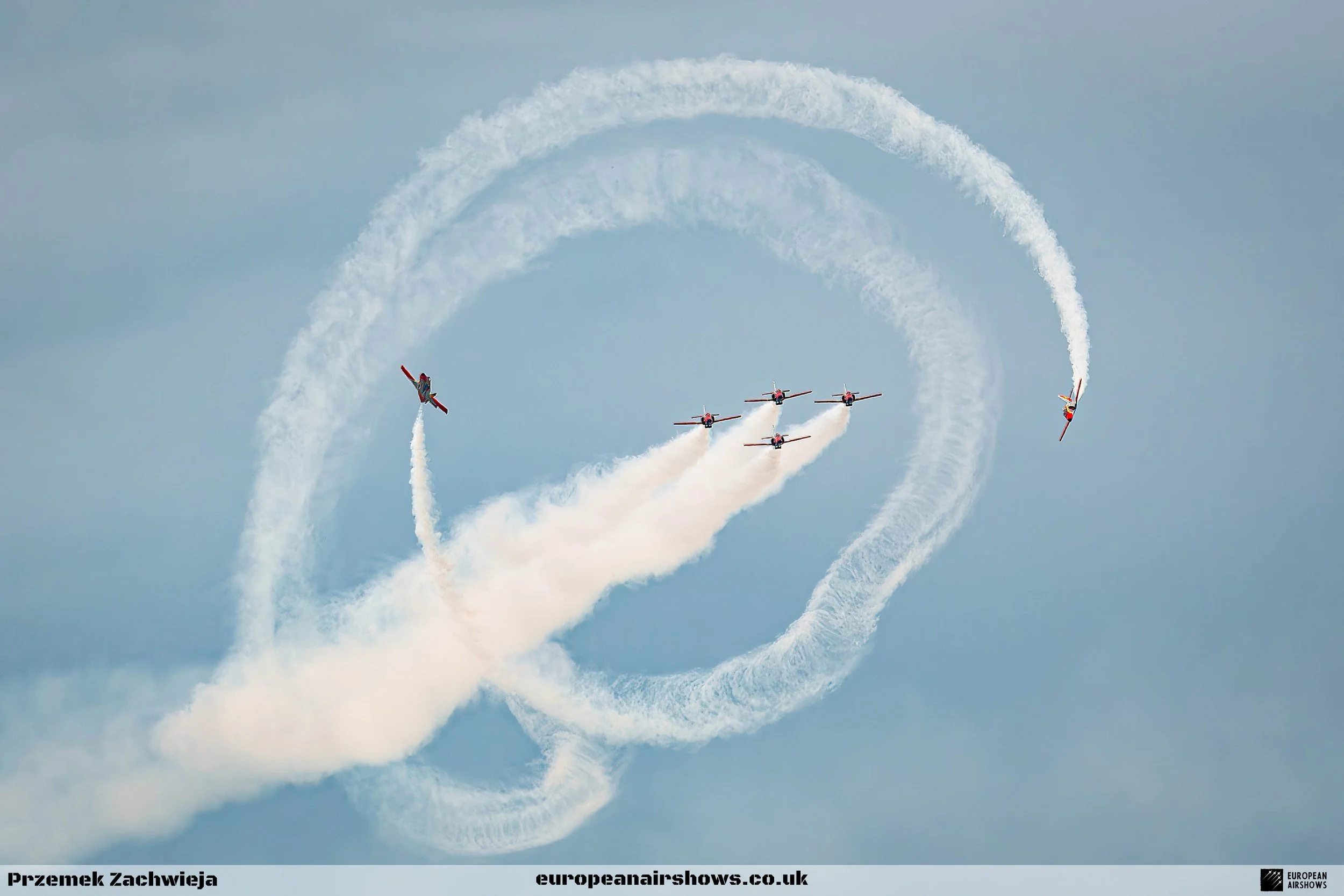
June 4 / Patrulla Aguila Formed
Formed 4 June 1985
Patrulla Aguila
Patrulla Águila (Spanish for "Eagle Patrol"), formed on 4th of June 1985, is the aerobatic demonstration team of the Spanish Air Force. The team is based at San Javier Air Base at the location of the academy of officers of the Spanish Air Force, near Mar Menor and La Manga, in the Murcia region of Spain. The team consists of 12 Spanish-built CASA C-101 Aviojet jet trainers however only seven or six of them actually fly in airshows. Patrulla Aguila consists of 11 pilots each using the callsign "Aguila" and 30 ground personnel, 16 of which are first-line technicians who travel with the team and look after the jets during the airshow season. All pilots in the team are full-time flight instructors with different military backgrounds who fly as an aerobatic team in their free time. Patrulla Aguilla is one of very few teams in the world to have a spare display pilot who when needed can fly the display.
Patrulla Aguila is the only military team in Europe to use yellow smoke and is well known for their formation landings. The team has three different displays depending on the weather conditions the first high display when the cloud base is greater than 4500 feet at the base of the manoeuvre, Low display when the cloud base is greater than 2500 feet at the base and a flat display with the cloud base from 1500 feet at the base. The team perform a 20-minute display which is split into two halves, in the first half, all seven aircraft perform challenging close formation aerobatics that includes barrel rolls and loops while constantly changing formations before breaking for the more dynamic second half. In the second half, the team separates into three formations: a basic four-ship formation, a solo, and synchro pair. Patrulla Aguilla is the only team in the world to perform an inverted loop on a jet a very challenging and uncomfortable manoeuvre performed by the team’s most experienced solo pilot.
The Eagle Patrol was founded in the Basic School of the Matacán Military Base (Salamanca), in 1954. Although during the 50s and 60s there were various aerobatic patrols in Spain, they were:
Patrol of the Talavera la Real Air Base (Badajoz).
Patrol of the Los Llanos Air Base (Albacete).
Ascua Patrol of the Manises Air Base (Valencia).
The entry into service of the CASA C-101, a Spanish-made aircraft ideal for performing stunts, led to the creation in 1985 of a permanent air patrol, led mainly by Captain Carrizosa.
The patrol realized its first training on the 4th of June 1985, with the best pilots from the Spanish Air Force selected for the role. The team started flying on five aircraft that was quickly increased to seven followed by the new paint scheme on the jets that was inspired by the extinct Patrol Ascua.
Currently, the Patrulla Aguila, having completed twenty-five seasons since its foundation, accumulated more than 25,000 flight hours, and has participated in more than three hundred airshows, both civil and military, including the Universal Exhibition of Seville (where they used for the first time coloured smoke, to draw the Spanish flag), the opening of the Volvo Ocean Race in November 2005 in Vigo or the Olympic Games in Barcelona. One of his most recent acts of presence in large mass shows was in the celebration of the soccer world championship achieved by Spain in 2010.
PatrullaAguila Facts
Formation and History: Patrulla Águila was officially formed on June 4, 1985. It was established to showcase the skills of Spanish Air Force pilots and to represent Spain at international air shows and events.
Aircraft: The team flies the CASA C-101 Aviojet, a Spanish jet trainer aircraft. Known for its agility and performance, the C-101 is well-suited for aerobatic manoeuvres and has been in service with the team since its inception.
Team Composition: Patrulla Águila typically consists of six or seven pilots, each with extensive experience in both flying and aerobatics. The team also includes ground support personnel responsible for maintenance and logistics.
Base of Operations: The team is based at San Javier Air Base, located in the Murcia region of Spain. This base is also home to the General Air Academy, where Spanish Air Force pilots receive their training.
Distinctive Smoke Trails: One of the signature features of Patrulla Águila’s performances is the use of coloured smoke trails. The team often uses red and yellow smoke to represent the colours of the Spanish flag, adding a patriotic flair to their displays.
Precision and Discipline: The team’s manoeuvres require a high degree of precision and discipline. Pilots must maintain exact formations and execute complex aerobatic sequences with perfect timing, often flying just meters apart from each other.
International Presence: Patrulla Águila has performed at numerous international air shows and events, earning acclaim for their skilful displays. They have represented Spain in countries across Europe, North America, and beyond.
Training and Preparation: The team undergoes rigorous training to prepare for their performances. This includes both flight training and ground-based simulations to practice manoeuvres and ensure safety.
Community Engagement: In addition to their air show performances, Patrulla Águila is involved in various community and outreach activities. They often participate in events to inspire young people and promote careers in aviation and the military.
Innovative Maneuvers: Patrulla Águila is known for its innovative and dynamic aerobatic routines. Some of their signature manoeuvres include the “rollo de espejo” (Mirror roll), “Pase de espejo de formación” (Formation mirror pass), and the impressive formation landing, performed after their display, which are designed to captivate audiences and demonstrate the pilots’ exceptional skills.






















